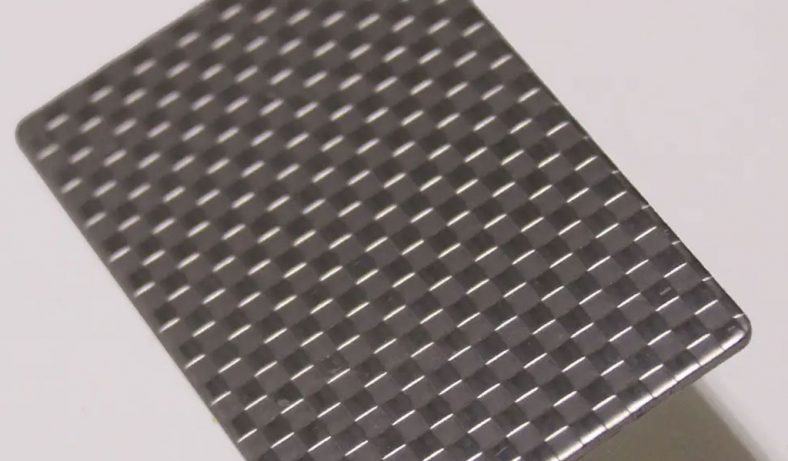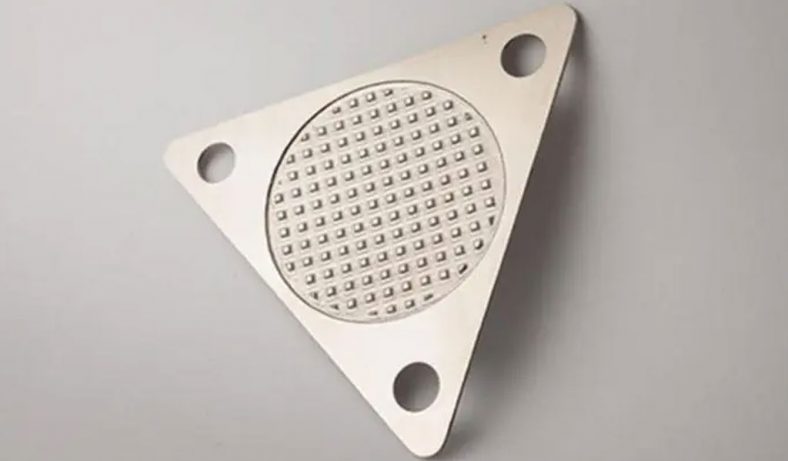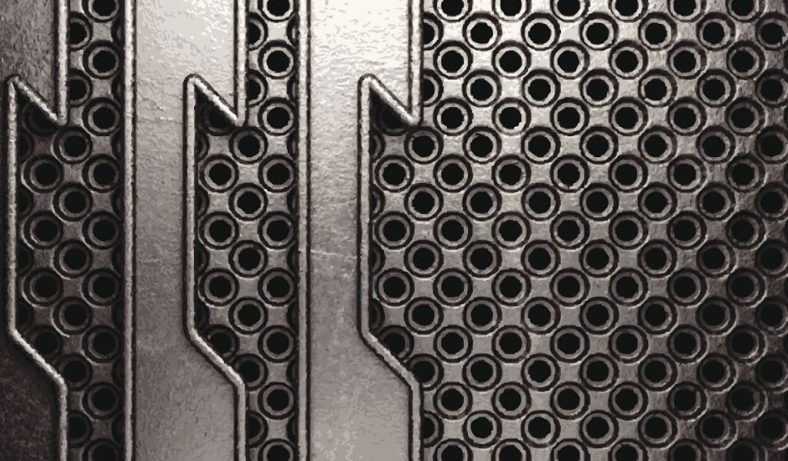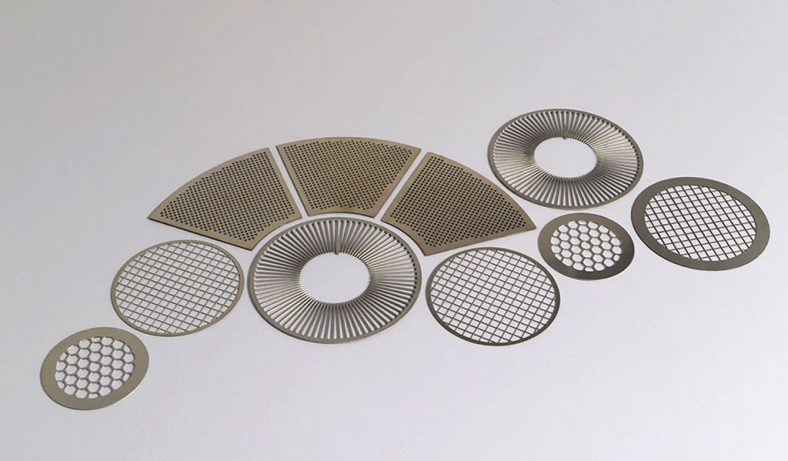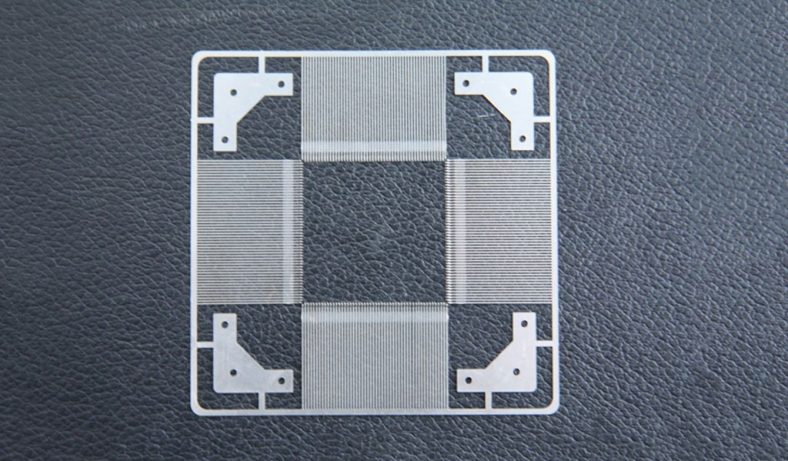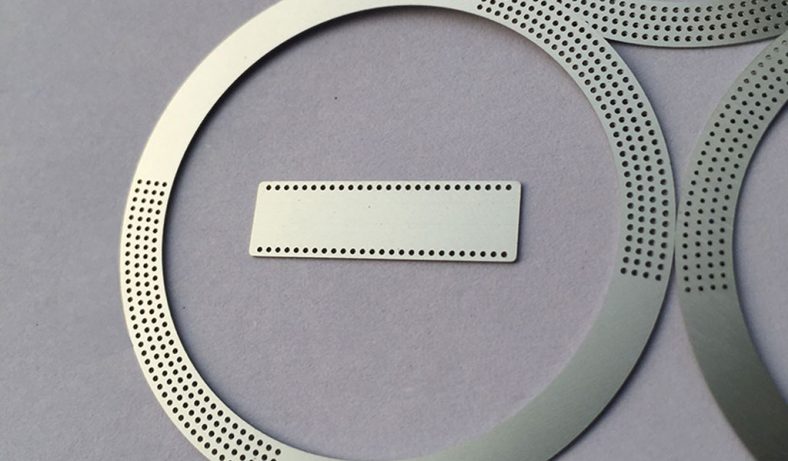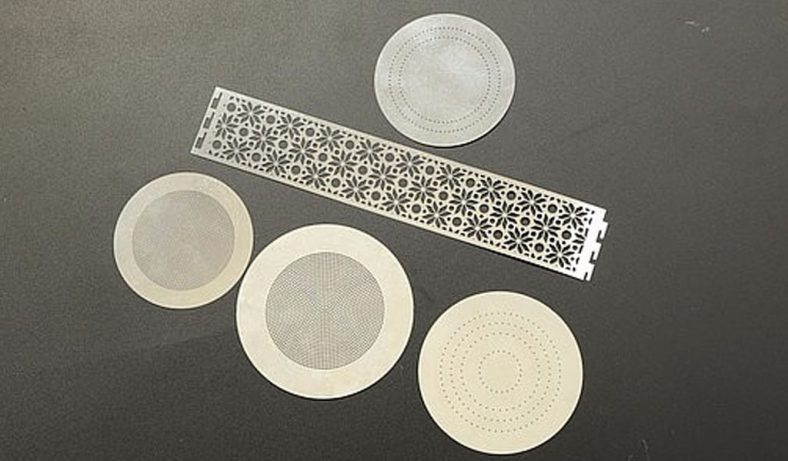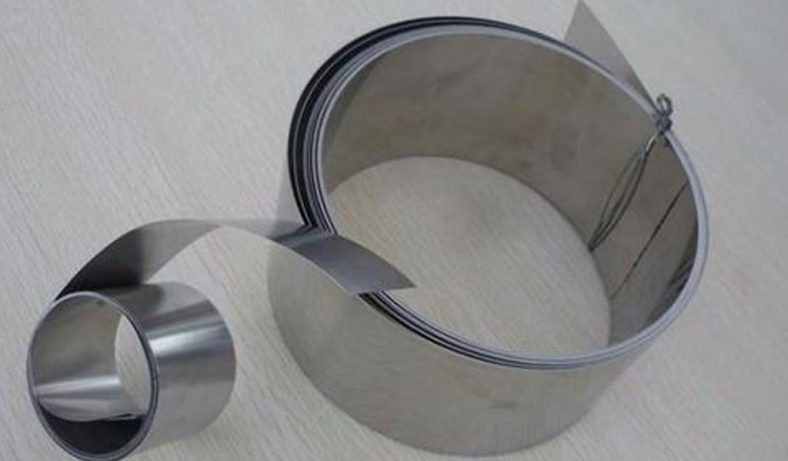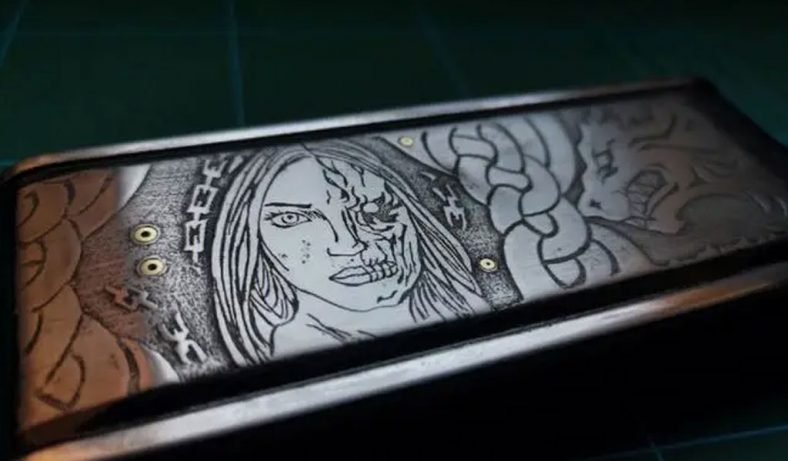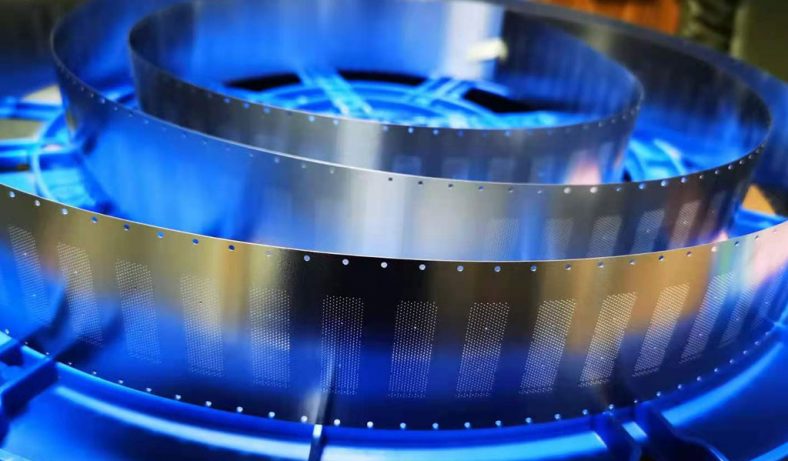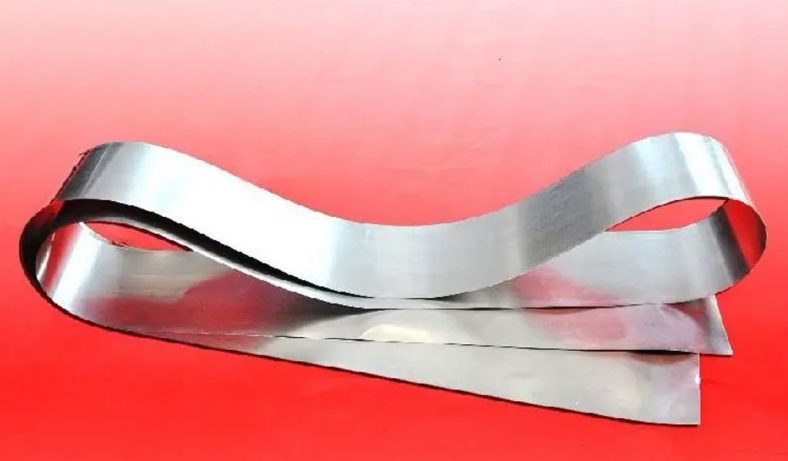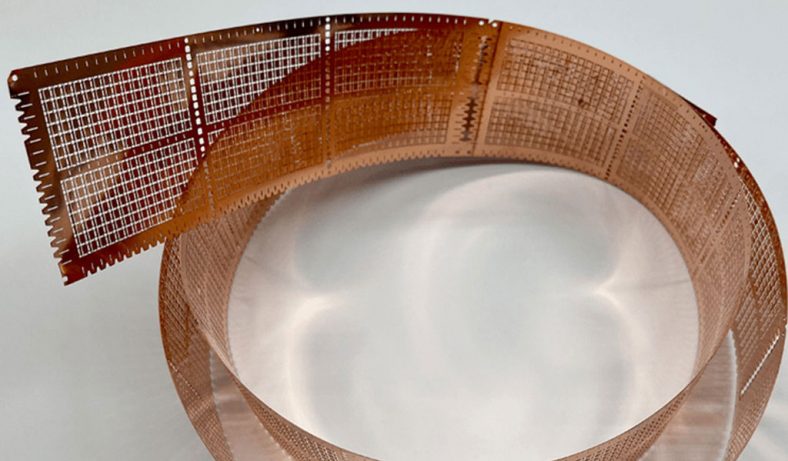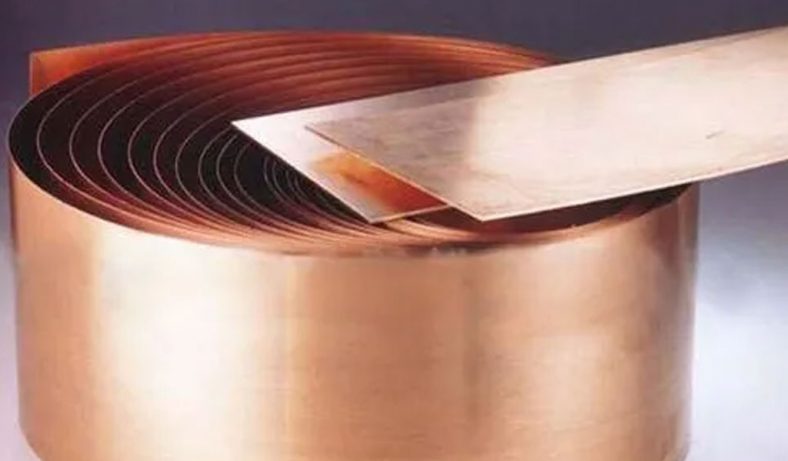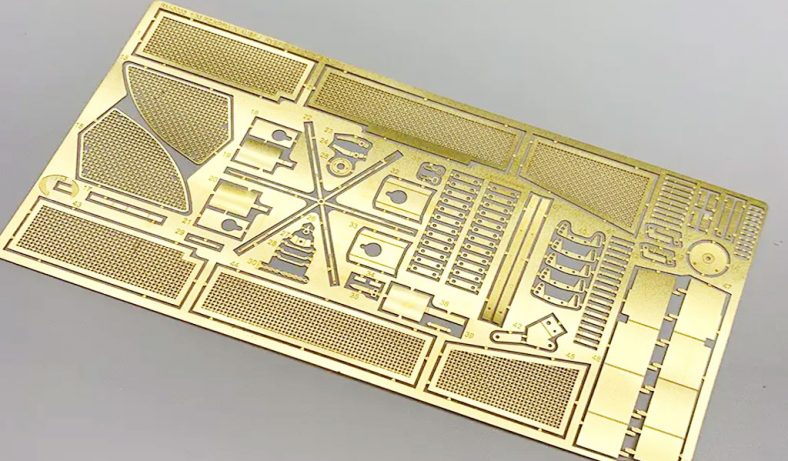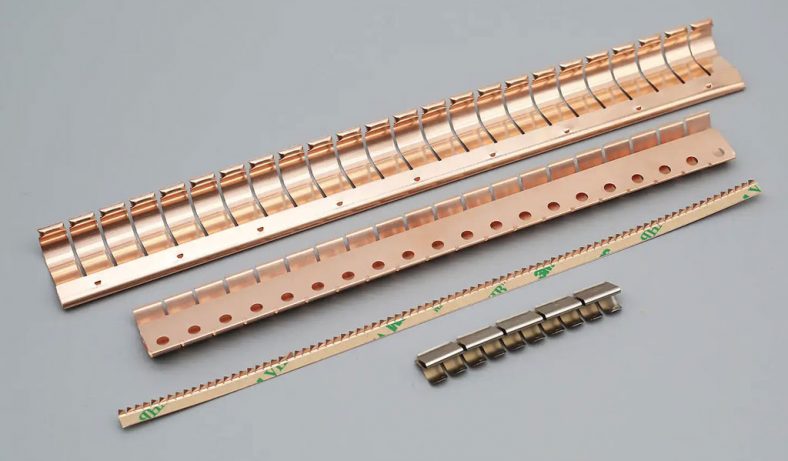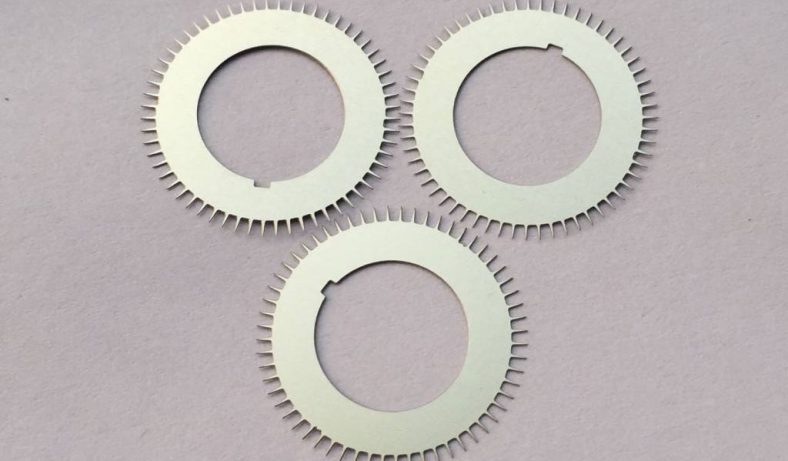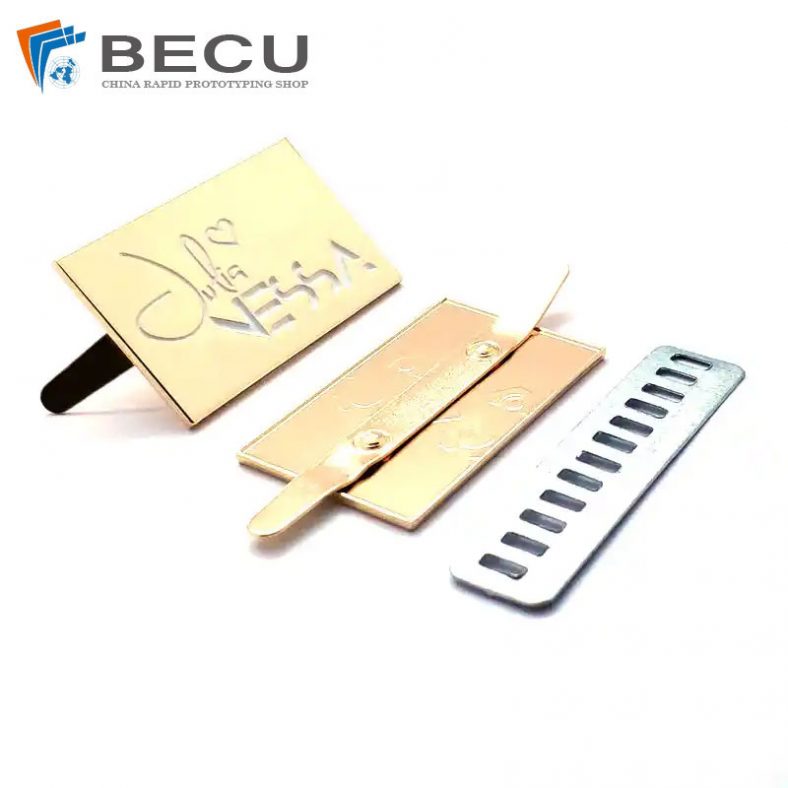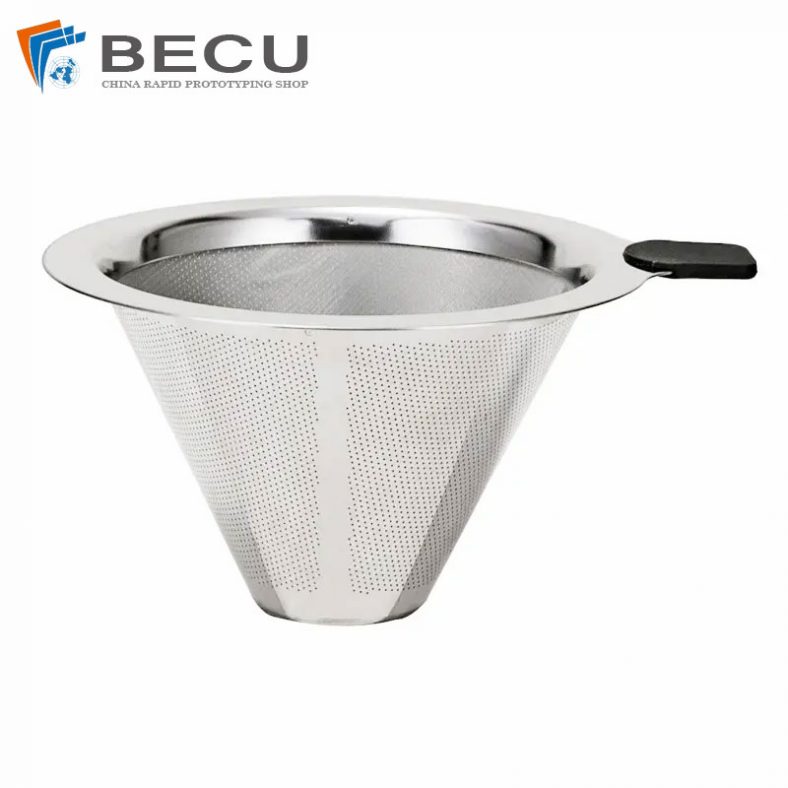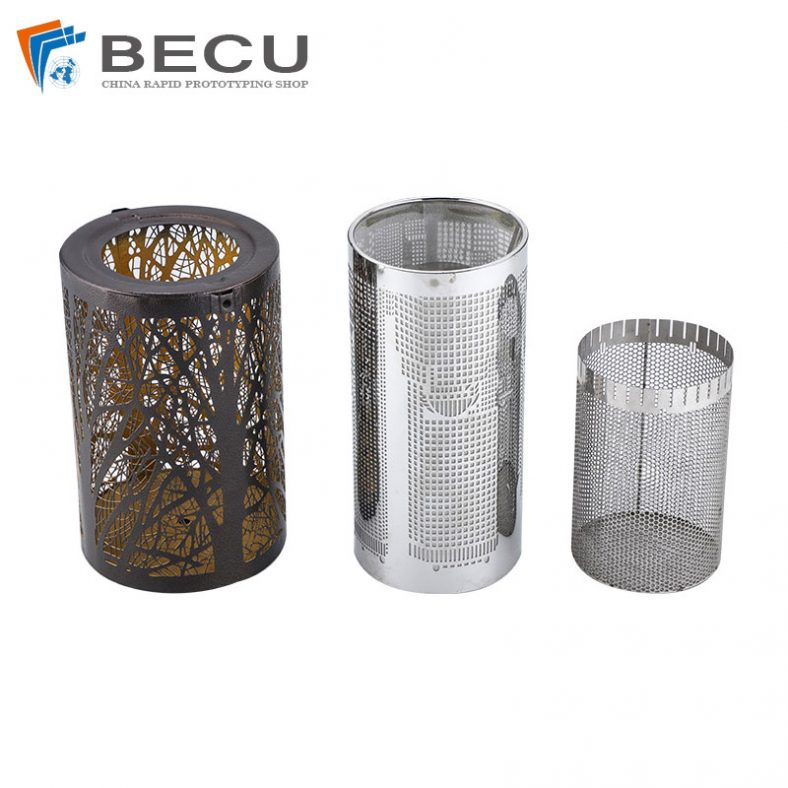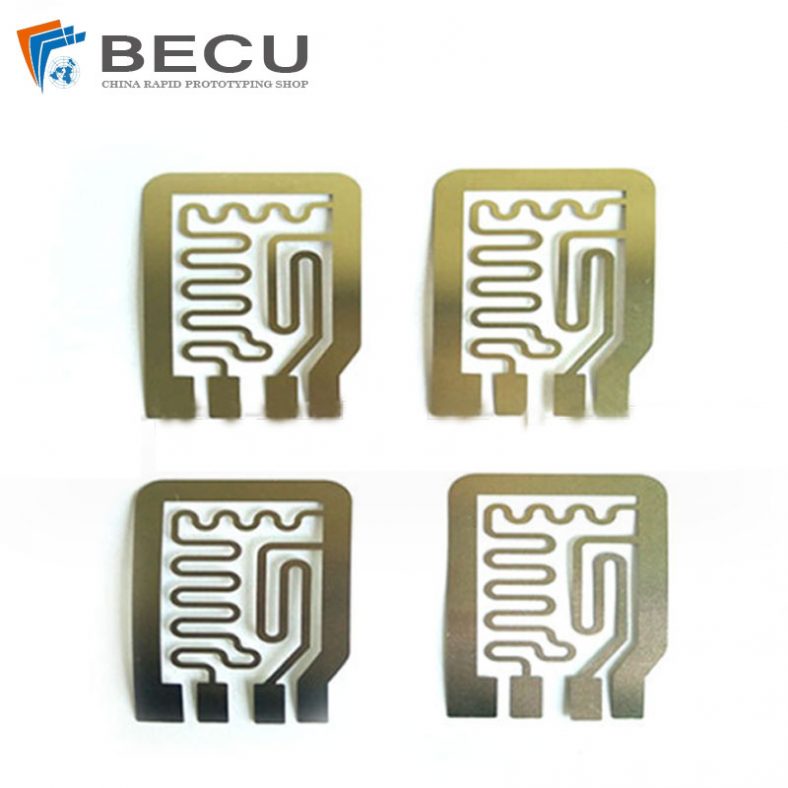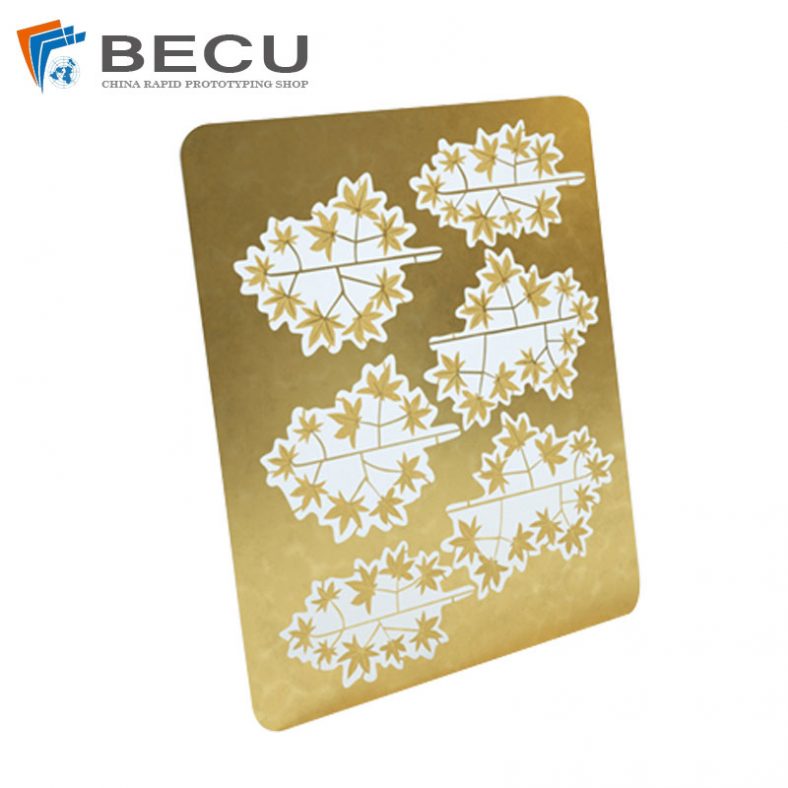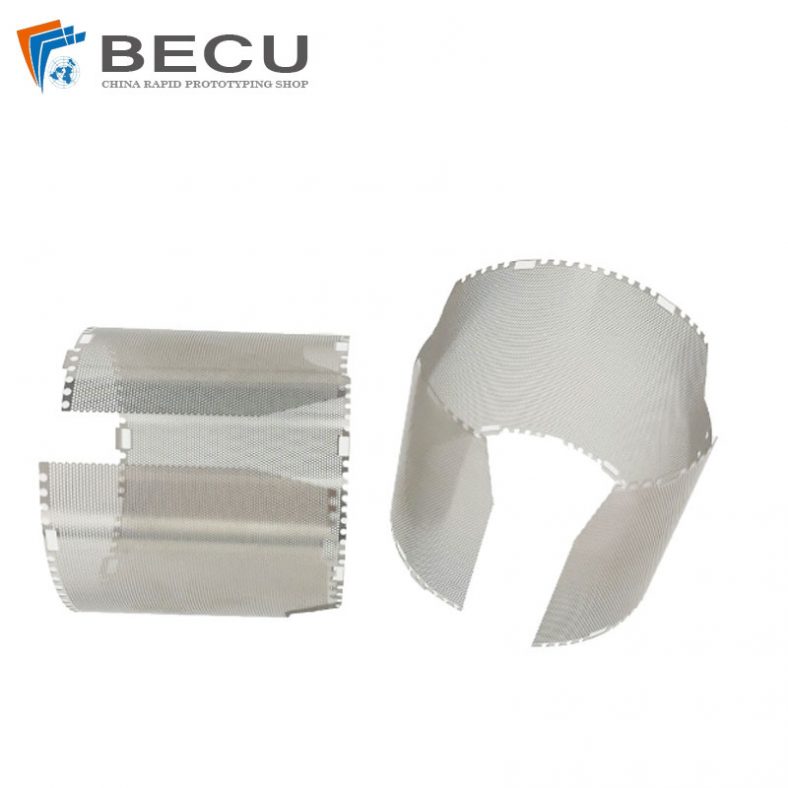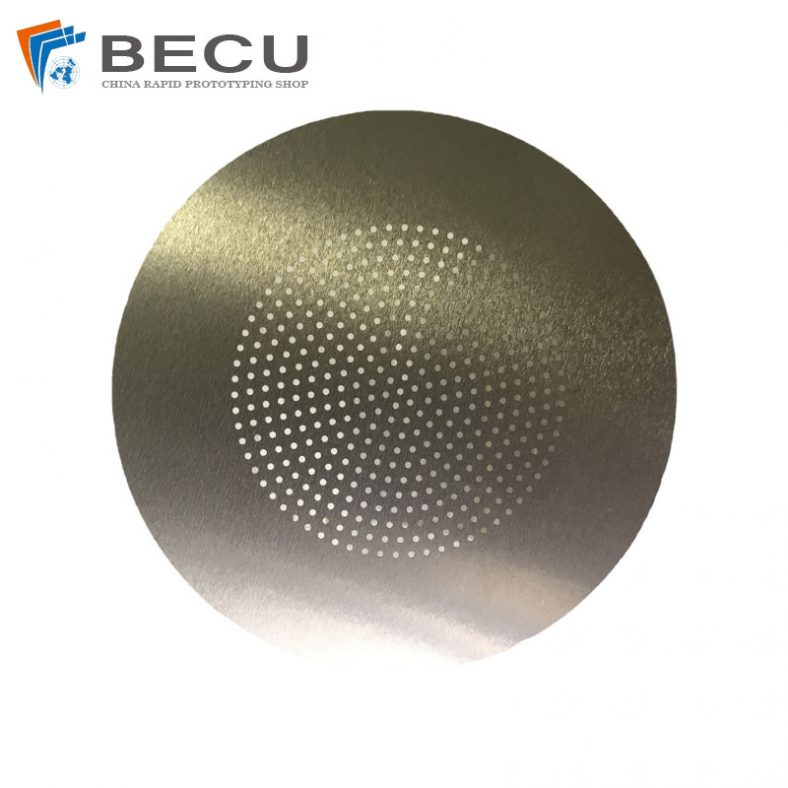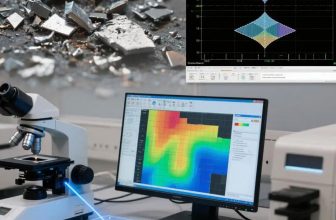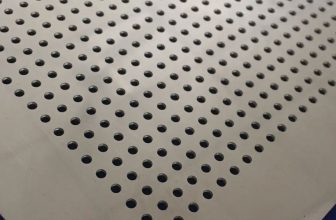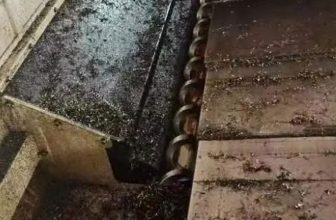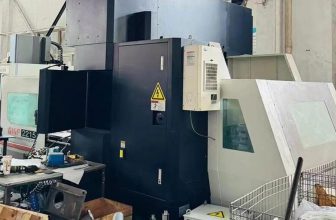Deep Reactive Ion Etching (DRIE) is a highly anisotropic plasma etching process used to create deep, steep-sided holes and trenches in substrates, typically with high aspect ratios. It is a cornerstone technology in microfabrication, particularly for the development of three-dimensional (3D) microstructures used in microelectromechanical systems (MEMS), photonics, microfluidics, and advanced semiconductor devices. Focused DRIE, a specialized subset of this technique, enhances precision by optimizing plasma conditions, mask design, and process parameters to achieve intricate 3D geometries with submicron accuracy. This article explores the principles, processes, applications, challenges, and recent advancements of focused DRIE in the fabrication of 3D microstructures, providing a comprehensive overview for researchers, engineers, and technologists.
The advent of DRIE, particularly the Bosch process, revolutionized microfabrication by enabling the creation of high-aspect-ratio structures that were previously unattainable with traditional etching methods. Focused DRIE builds upon this foundation, leveraging advanced plasma systems, precise control of etching parameters, and innovative masking techniques to sculpt complex 3D shapes in materials such as silicon, silicon carbide (SiC), and glass. Its applications span a wide range of industries, from inertial sensors in automotive systems to microneedles for biomedical diagnostics, and waveguides for optical communications. This article aims to elucidate the technical underpinnings of focused DRIE, its role in shaping modern microtechnology, and its potential for future innovations.
Historical Context and Evolution of DRIE
The development of DRIE can be traced back to the evolution of reactive ion etching (RIE) in the 1970s, when semiconductor manufacturing required precise etching of thin films. Traditional RIE, however, was limited to shallow etches (a few microns) due to constraints in ion density and etching rate. The introduction of inductively coupled plasma (ICP) systems in the 1990s marked a significant advancement, enabling denser plasmas and deeper etches. The Bosch process, patented by Robert Bosch GmbH in 1996, became the most widely adopted DRIE technique, utilizing a time-multiplexed cycle of etching and passivation to achieve anisotropic profiles with aspect ratios exceeding 30:1.
Focused DRIE emerged as a refinement of these techniques, driven by the need for greater control over sidewall profiles, feature sizes, and surface smoothness in 3D microstructures. By optimizing parameters such as bias power, gas flow rates, and cycle times, focused DRIE achieves submicron precision, making it ideal for applications requiring complex geometries, such as photonic crystals, microfluidic channels, and through-silicon vias (TSVs). The evolution of DRIE equipment, including high-power ICP reactors and advanced mask materials, has further enhanced the capabilities of focused DRIE, enabling its widespread adoption in both research and industrial settings.
Principles of Focused Deep Reactive Ion Etching
Fundamentals of Plasma Etching
DRIE operates by combining chemical and physical etching mechanisms within a plasma environment. A substrate, typically silicon, is placed in a vacuum chamber where reactive gases (e.g., sulfur hexafluoride, SF6) are ionized to form a plasma. The plasma generates reactive species, such as fluorine radicals, which chemically react with the substrate to form volatile byproducts (e.g., SiF4). Simultaneously, ions are accelerated toward the substrate by an electric field, providing a physical sputtering effect that enhances anisotropy by preferentially etching in the vertical direction.
Focused DRIE refines this process by optimizing the balance between chemical etching and ion bombardment. This is achieved through precise control of plasma density, ion energy, and gas chemistry. The use of high-density plasma sources, such as ICP, ensures a high concentration of reactive species, while advanced bias control minimizes lateral etching, resulting in near-vertical sidewalls.
The Bosch Process
The Bosch process is the most common DRIE technique and forms the basis for focused DRIE. It alternates between two phases:
- Etching Phase: SF6 plasma is used to isotropically etch the substrate, removing material from exposed surfaces.
- Passivation Phase: A fluorocarbon gas, typically octafluorocyclobutane (C4F8), deposits a thin polymer layer on the sidewalls, protecting them from lateral etching in subsequent cycles.
This cyclic process produces characteristic scalloping on the sidewalls, with scallop size dependent on cycle duration. In focused DRIE, cycle times are minimized (e.g., 5–10 seconds) to reduce scalloping, achieving smoother sidewalls suitable for optical and biomedical applications. The process is highly tunable, with parameters such as gas flow rates, bias power, and chamber pressure adjusted to control etch rate, selectivity, and profile accuracy.
Cryogenic DRIE
An alternative to the Bosch process, cryogenic DRIE operates at low temperatures (e.g., −110°C) to enhance anisotropy. By cooling the substrate, the chemical reaction rate on the sidewalls is reduced, while ion bombardment continues to etch the trench bottom. Cryogenic DRIE is particularly effective for etching nanostructures and smooth sidewalls, making it a valuable technique in focused DRIE for applications such as silicon nanowire arrays. However, it requires specialized equipment and mask materials resistant to thermal stress.
Key Parameters in Focused DRIE
Focused DRIE relies on the precise tuning of several parameters to achieve desired outcomes. These include:
- Bias Power: Controls ion energy and directionality, affecting anisotropy and etch rate.
- Chamber Pressure: Influences plasma density and uniformity, impacting etch uniformity across the wafer.
- Gas Flow Rates: Determines the concentration of reactive species and passivation polymers.
- Cycle Time: Affects scallop size and sidewall smoothness in the Bosch process.
- Substrate Temperature: Critical in cryogenic DRIE for controlling chemical reaction rates.
Table 1 summarizes the typical parameter ranges for focused DRIE processes.
| Parameter | Bosch Process | Cryogenic Process | Purpose |
|---|---|---|---|
| Bias Power (W) | 10–50 | 5–30 | Controls ion energy and anisotropy |
| Chamber Pressure (mTorr) | 10–50 | 5–20 | Affects plasma density and uniformity |
| SF6 Flow Rate (sccm) | 100–300 | 50–150 | Determines etching rate |
| C4F8 Flow Rate (sccm) | 50–150 | N/A | Controls passivation layer thickness |
| Cycle Time (s) | 5–10 | N/A | Influences scallop size and sidewall smoothness |
| Substrate Temperature (°C) | 20–50 | −110 to −80 | Modulates chemical reaction rates |
Table 1: Typical Parameter Ranges for Focused DRIE Processes
Fabrication of Three-Dimensional Microstructures
High-Aspect-Ratio Structures
Focused DRIE is renowned for its ability to create high-aspect-ratio microstructures, defined as features with a depth-to-width ratio exceeding 10:1. These structures are critical in applications such as MEMS inertial sensors, where deep trenches and pillars enhance mechanical stability and sensitivity. For example, aspect ratios as high as 107:1 have been reported for submicron trenches in silicon, achieved through optimized Bosch processes on ICP reactors.
The fabrication process begins with photolithography to define patterns on a mask layer, typically photoresist or silicon dioxide (SiO2). The substrate is then etched using focused DRIE, with careful control of etching and passivation cycles to maintain verticality. Post-etch treatments, such as wet etching with potassium hydroxide (KOH), may be applied to smooth sidewalls, reducing surface roughness to as low as 50 nm.
Complex 3D Geometries
Beyond simple trenches, focused DRIE enables the creation of complex 3D geometries, such as microcavities, cantilevers, and suspended membranes. These structures are achieved through techniques such as:
- Multi-Step Etching: Varying etch parameters or mask patterns in successive DRIE steps to create multi-depth structures.
- Isotropic Etching Integration: Combining anisotropic DRIE with isotropic etching to form rounded or undercut features.
- Mask Design Optimization: Using grayscale masks or multiple mask layers to control etch depth and shape.
For example, microfluidic channels with embedded herringbone mixers have been fabricated using focused DRIE, enhancing mixing efficiency in lab-on-chip devices. Similarly, photonic crystals with intricate lattice structures rely on focused DRIE to achieve submicron periodicity and precise sidewall angles.
Material Versatility
While silicon is the most common substrate for focused DRIE, the technique has been adapted for other materials, including:
- Silicon Carbide (SiC): Used in harsh-environment MEMS due to its thermal and chemical stability. A time-multiplexed etch-passivate (TMEP) process has enabled aspect ratios up to 13:1 in SiC.
- Glass: Requires high plasma power and specialized masks, suitable for microfluidic and optical applications.
- Polymers: Emerging in flexible electronics, with DRIE used to pattern thin polymer films.
Table 2 compares the etching characteristics of different materials in focused DRIE.
| Material | Etch Rate (μm/min) | Max Aspect Ratio | Mask Material | Applications |
|---|---|---|---|---|
| Silicon | 10–20 | 100:1 | Photoresist, SiO2 | MEMS, TSVs, Photonics |
| Silicon Carbide | 0.2–0.5 | 13:1 | Ni, Cr | Harsh-environment MEMS |
| Glass | 0.5–2 | 10:1 | Metal (e.g., Cr/Au) | Microfluidics, Optical waveguides |
| Polymers | 1–5 | 5:1 | Photoresist | Flexible electronics |
Table 2: Etching Characteristics of Materials in Focused DRIE
Applications of Focused DRIE in 3D Microstructures
Microelectromechanical Systems (MEMS)
MEMS devices, such as accelerometers, gyroscopes, and pressure sensors, rely heavily on focused DRIE for their fabrication. The ability to create deep, high-aspect-ratio features enables the production of sensitive and compact components. For example, Bosch’s surface-micromachined accelerometers, introduced in 1997, used DRIE to etch 10 μm thick polysilicon layers for airbag deployment systems. Similarly, gyroscopes for electronic stability programs require trenches up to 100 μm deep, achievable only through focused DRIE.
Focused DRIE also facilitates the integration of MEMS with CMOS electronics, enabling system-on-chip solutions. Through-silicon vias (TSVs), etched using DRIE, provide vertical electrical interconnects, reducing footprint and improving performance in 3D-integrated circuits.
Photonics and Optoelectronics
In photonics, focused DRIE is used to fabricate waveguides, photonic crystals, and optical resonators with submicron precision. The high anisotropy of DRIE ensures minimal scattering losses in waveguides, critical for high-speed optical communication. For instance, silicon photonic crystals with lattice periods as small as 300 nm have been fabricated using focused DRIE, enabling applications in optical sensing and quantum computing.
Cryogenic DRIE is particularly valuable in photonics, as it produces smooth sidewalls that reduce optical losses. The technique has been used to etch silicon nanowire arrays for lithium-ion battery anodes, demonstrating its versatility in optoelectronic applications.
Microfluidics and Biomedical Devices
Focused DRIE is a key enabler in microfluidics, where it is used to create channels, mixers, and reservoirs with precise dimensions. Microchannels with aspect ratios up to 107:1 have been fabricated for heat sinks, enhancing flow boiling performance. In biomedical applications, DRIE is used to produce microneedle arrays for transdermal drug delivery and diagnostics. These needles, typically 500 μm tall with 50 μm bores, are fabricated using a combination of front-side wet etching and rear-side DRIE, ensuring biomechanical reliability.
The integration of herringbone mixers in microfluidic channels, achieved through focused DRIE, enhances mixing efficiency in lab-on-chip devices, enabling rapid diagnostic assays. Additionally, DRIE’s ability to etch biocompatible materials like SiC makes it suitable for implantable sensors and harsh-environment diagnostics.
Advanced Semiconductor Packaging
In semiconductor packaging, focused DRIE is used to create TSVs for 3D integration, enabling high-density interconnects in multi-chip modules. TSVs, typically 10–20 μm in diameter and up to 100 μm deep, are etched using the Bosch process, with aspect ratios of 10:1 or higher. The technique’s high etch rate (up to 20 μm/min) and uniformity (±1% across wafers) make it ideal for high-volume production.
Focused DRIE also supports the fabrication of flexible electronics by thinning silicon substrates to tens of microns, enhancing mechanical flexibility without compromising electrical performance. This is particularly relevant for wearable devices and foldable displays.
Challenges and Limitations
Etch Lag and Microloading
Reactive ion etching lag, where narrower features etch more slowly than wider ones, is a significant challenge in focused DRIE. This phenomenon, caused by reduced ion and radical transport in high-aspect-ratio trenches, can lead to depth variations exceeding 10% for aspect ratios above 2.5:1. Focused DRIE mitigates this through optimized two- and three-step Bosch processes, reducing lag to below 1.5% by adjusting etch-to-passivation ratios.
Microloading, where etch rate varies with pattern density, is another issue. Areas with higher exposed silicon etch faster due to increased fluorine radical concentration. Focused DRIE addresses this by characterizing etch recipes for specific mask designs and maintaining uniform feature widths across the wafer.
Sidewall Scalloping and Roughness
The cyclic nature of the Bosch process produces scalloping, with sidewall roughness typically in the range of 100–500 nm. In focused DRIE, short cycle times and post-etch KOH treatments reduce scalloping to 30–50 nm, suitable for optical and biomedical applications. Cryogenic DRIE offers smoother sidewalls but is less versatile due to thermal constraints.
Mask Selectivity and Erosion
Mask erosion limits the achievable etch depth, particularly for high-aspect-ratio features. Photoresist masks erode rapidly under ion bombardment, while hard masks like SiO2 or chromium offer higher selectivity (up to 700:1 in cryogenic DRIE). Focused DRIE optimizes mask materials and thicknesses to balance selectivity and pattern transfer accuracy.
Notching and Profile Control
Notching, where over-etching occurs at dielectric interfaces (e.g., in silicon-on-insulator wafers), can compromise structural integrity. Focused DRIE employs pulsed-biasing schemes and etch-stop layers to suppress notching. Profile control, particularly for tapered or reentrant sidewalls, requires precise tuning of gas chemistry and bias power, adding complexity to process optimization.
Table 3 summarizes the challenges and mitigation strategies in focused DRIE.
| Challenge | Description | Mitigation Strategies |
|---|---|---|
| Etch Lag | Slower etching in narrow features due to reduced ion/radical transport | Optimized two-/three-step Bosch processes, uniform feature widths |
| Microloading | Etch rate variation with pattern density | Recipe characterization, uniform mask design |
| Sidewall Scalloping | Roughness from cyclic etching/passivation | Short cycle times, KOH post-etch, cryogenic DRIE |
| Mask Erosion | Degradation of mask under ion bombardment | Hard masks (SiO2, Cr), optimized mask thickness |
| Notching | Over-etching at dielectric interfaces | Pulsed biasing, etch-stop layers |
Table 3: Challenges and Mitigation Strategies in Focused DRIE
Recent Advancements in Focused DRIE
Process Optimization
Recent advancements in focused DRIE have focused on improving etch rate, uniformity, and sidewall quality. High-power ICP reactors (up to 3 kW) achieve etch rates exceeding 20 μm/min with ±1.5% uniformity across 6-inch wafers. Three-step Bosch processes, incorporating a breakthrough step to remove native oxide, have enabled trenches up to 377 μm deep with aspect ratios of 31.4:1.
Equipment Innovations
Modern DRIE systems, such as PlasmaTherm’s Versaline DSE and Oxford Instruments’ PlasmaPro 300 Cobra, offer advanced features like electrostatic chucking and liquid-cooled electrodes for precise temperature control. These systems support both Bosch and cryogenic processes, enhancing versatility. Samco’s RIE-800iPB system integrates Bosch and non-Bosch processes, enabling smooth sidewalls for TSVs and optical components.
Novel Materials and Applications
Focused DRIE has been extended to emerging materials like single-crystal diamond, achieving etch rates of 30 μm/h for micro-mechanical components in watches. The technique’s application in flexible electronics has grown, with DRIE used to thin silicon substrates for wearable sensors. In biotechnology, DRIE has enabled the fabrication of porous microstructures for tissue engineering scaffolds.
Simulation and Modeling
Three-dimensional simulation frameworks, such as Victory-Process, have improved process predictability by modeling etching and passivation dynamics. These tools optimize cycle time ratios and gas chemistries, reducing development time. Monte Carlo methods have been used to simulate ion trajectories, enhancing profile control in submicron features.
Future Directions
The future of focused DRIE lies in addressing its remaining challenges and expanding its applications. Key areas of focus include:
- Atomic-Scale Precision: Techniques like atomic layer etching (ALE) could be integrated with DRIE to achieve atomic-scale control, enabling next-generation nanodevices.
- Sustainable Processes: Developing environmentally friendly etchants to replace SF6, which has a high global warming potential, is a priority.
- Hybrid Etching: Combining DRIE with wet etching or laser micromachining to create hybrid 3D structures with enhanced functionality.
- Scalability: Improving throughput and uniformity for 300 mm wafers to meet the demands of high-volume semiconductor manufacturing.
Focused DRIE is poised to play a central role in emerging fields such as quantum computing, where precise 3D structures are needed for qubit integration, and synthetic biology, where microfluidic platforms enable high-throughput experimentation.
Conclusion
Focused Deep Reactive Ion Etching is a transformative technology in microfabrication, enabling the creation of intricate three-dimensional microstructures with unprecedented precision. Its applications in MEMS, photonics, microfluidics, and semiconductor packaging underscore its versatility and impact. While challenges such as etch lag, scalloping, and mask erosion persist, ongoing advancements in process optimization, equipment design, and simulation tools are addressing these limitations. As focused DRIE continues to evolve, it will drive innovation in fields ranging from biomedical engineering to quantum technology, cementing its status as a cornerstone of modern microtechnology.

